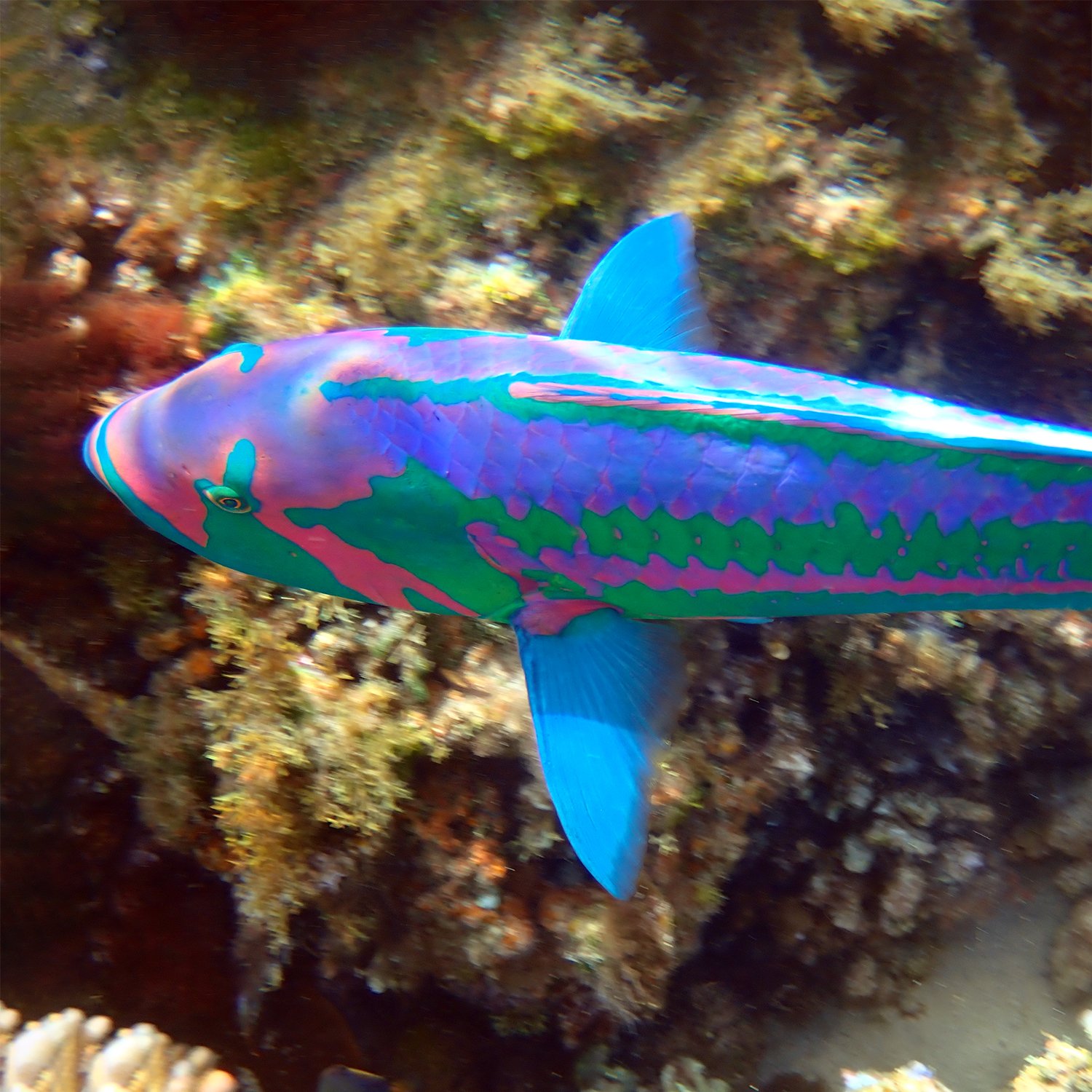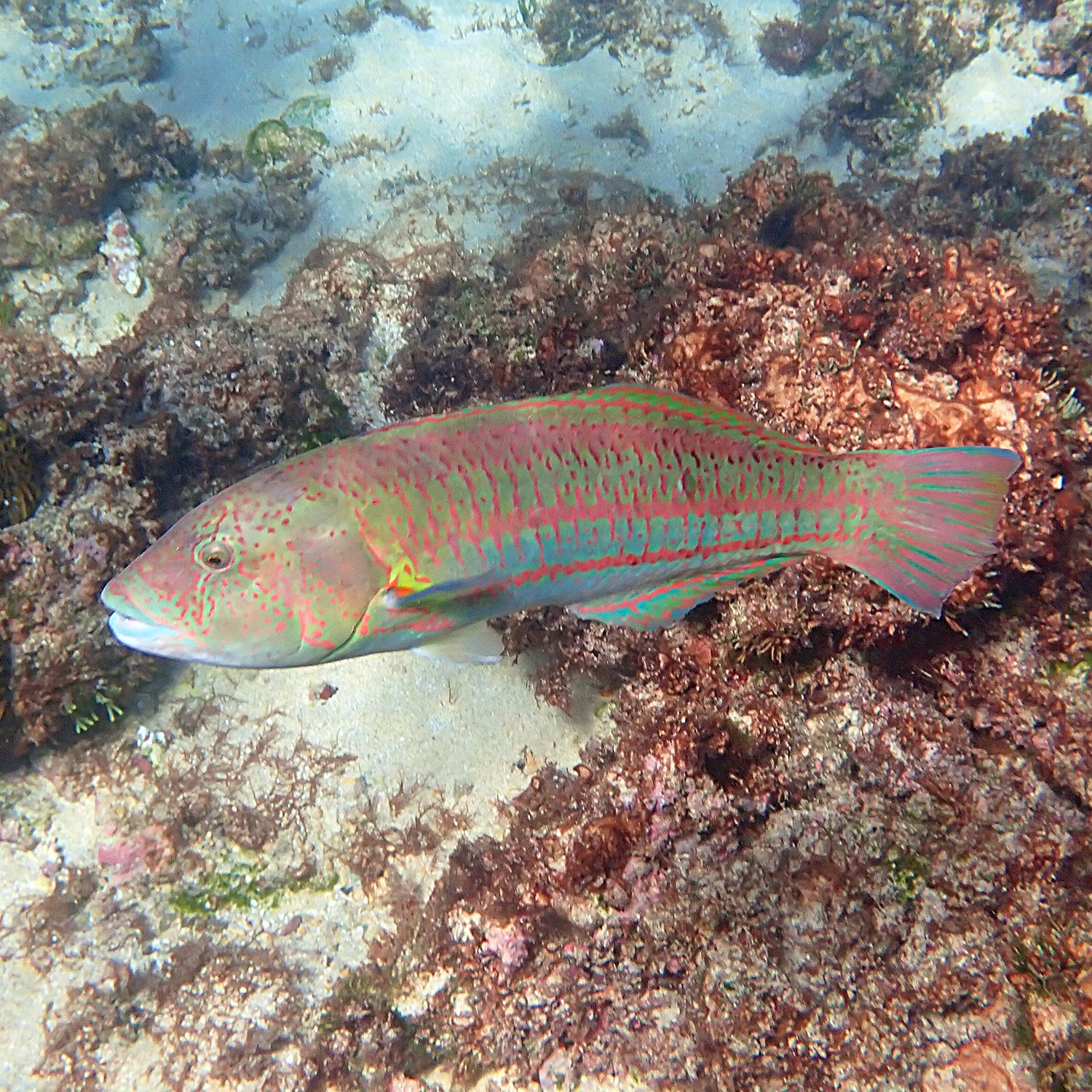Meet George, the surge wrasse. In fact, here on Norfolk Island, for some weird reason, they are all called George and have been for as long as I can remember. I’ve no idea why, but I do recall asking someone, many years ago, what kind of fish this purple, turquoise and pink guy was and I was told, ‘Oh, that is George!’ And so the name stuck!
George is also known as a green-blocked wrasse, purple wrasse or red and green wrasse, and more formally as a Thalassoma purpureum.
These guys are insanely, eye-achingly colourful, so I decided they were worthy of a photo dump on these pages. The Georginas can be seen towards the bottom of the photo gallery, and while more subtle in their colouration they are still very pretty.
Here are some quick facts about George and his relatives:
Surge wrasse are widespread, ranging from the southeast Atlantic, across the Indian Ocean and into the Pacific.
They love to hang out on rocky shores and coral reefs where there is plenty of heavy wave action.
The largest males can grow up to 46 cm in length and weigh about 1.2 kg.
George is a carnivore. He likes to eat sea urchins, crabs, molluscs, worms and other invertebates, and even small fish. You can see a surge wrasse feeding on fish in the video, ‘Lifecycle of the mouthbrooding Norfolk Cardinalfish, below.
They are protogynous hermaphrodite, in that females change sex to become males.
It is a pelagic spawner. The eggs and sperm are broadcast into the surface waters of the open ocean.
They are thought to live for ten years in the wild.
The surge wrasse’s protractile mouth juts outwards (Norfolk Island)
Surge wrasse are members of the wrasse family (Labridae) many of which are brightly coloured. I have noted 22 species of wrasse living inside our lagoons so far. If you include parrotfish (Scaridae), which are traditionally referred to as a separate family, but are now often treated as wrasse, there are an additional five species that I have recorded here.
Like many members of the wrasse family, they have protractile mouths, with separate jaw teeth that project forward, and fleshy lips.
























